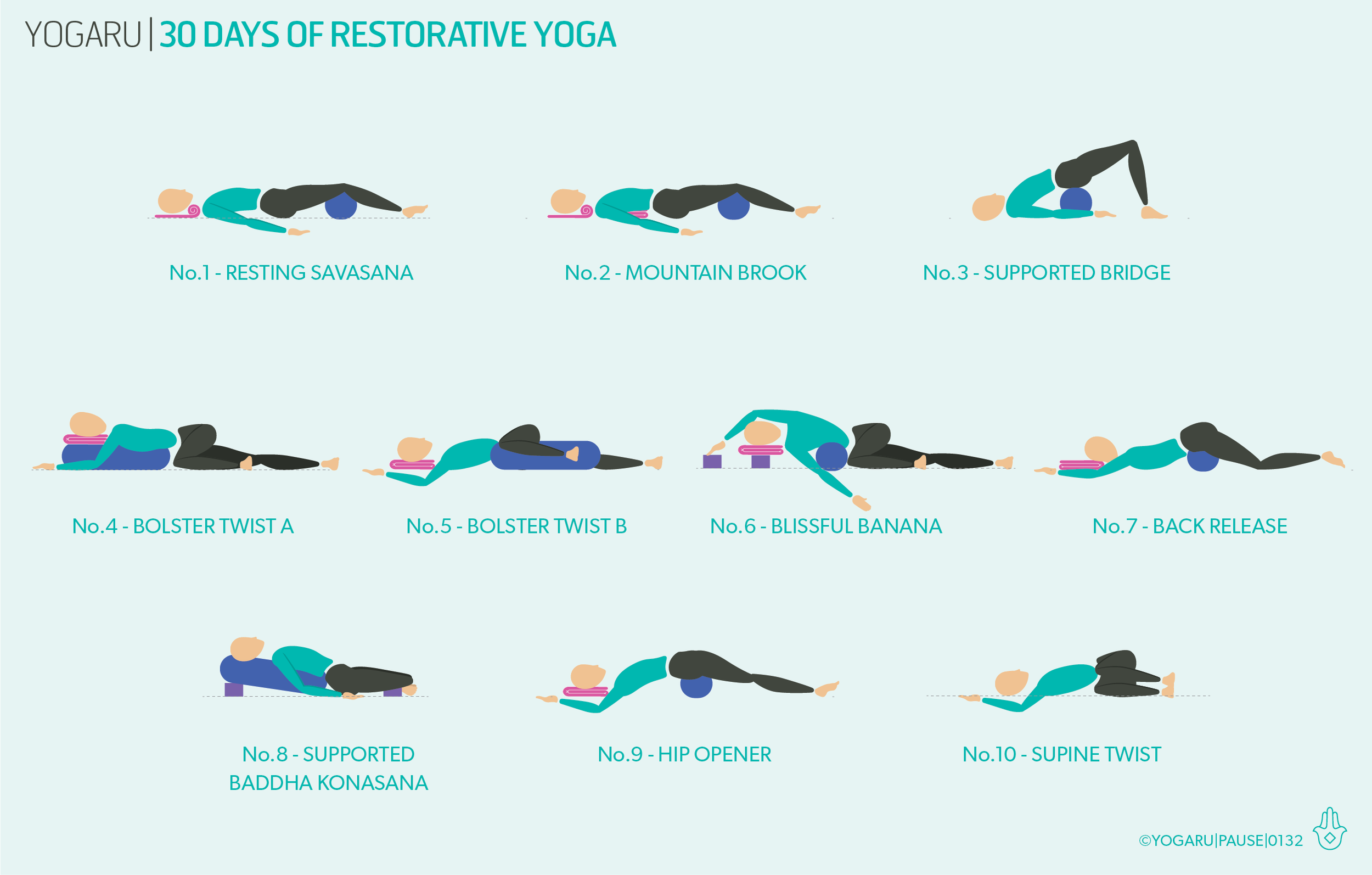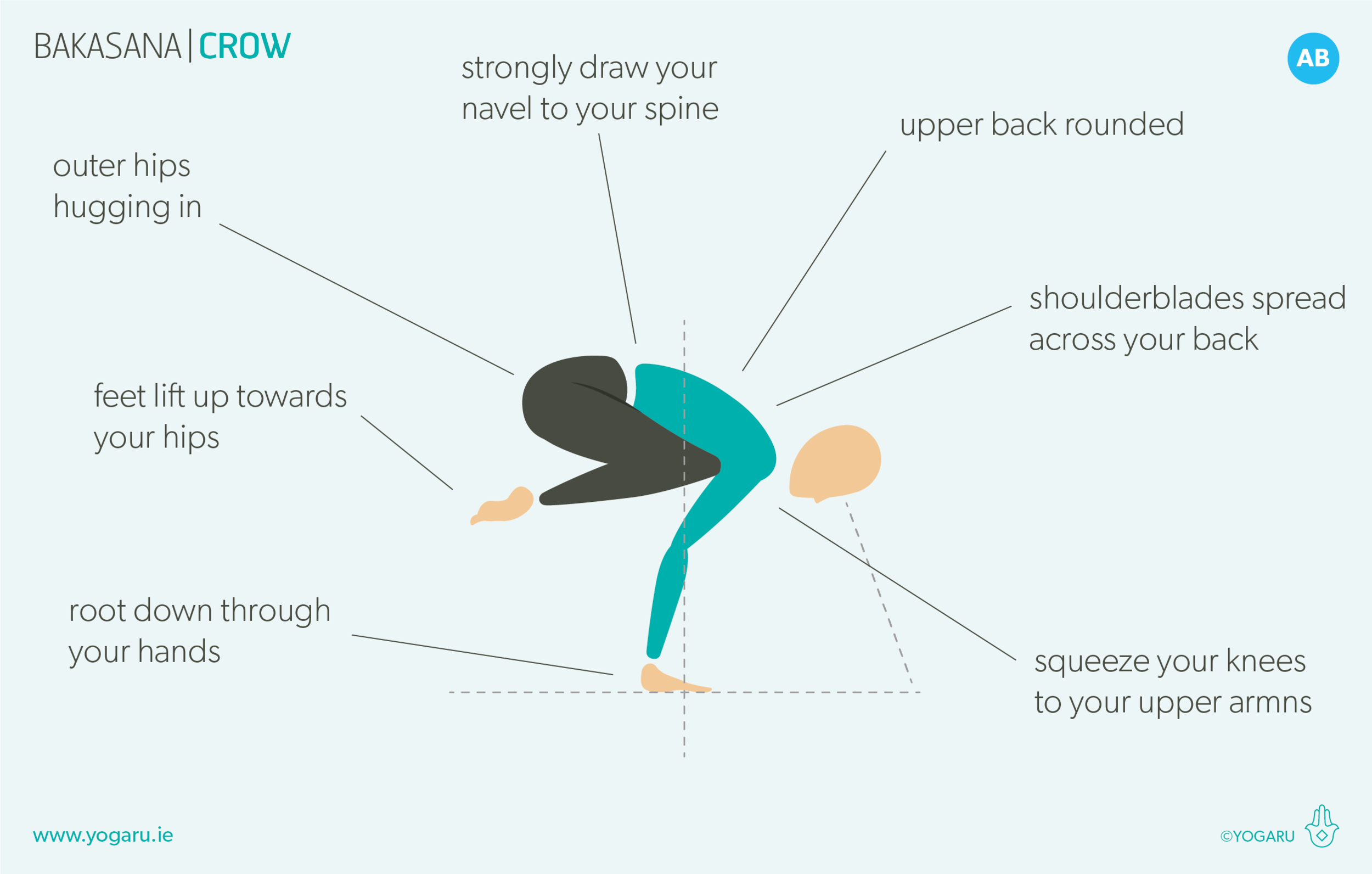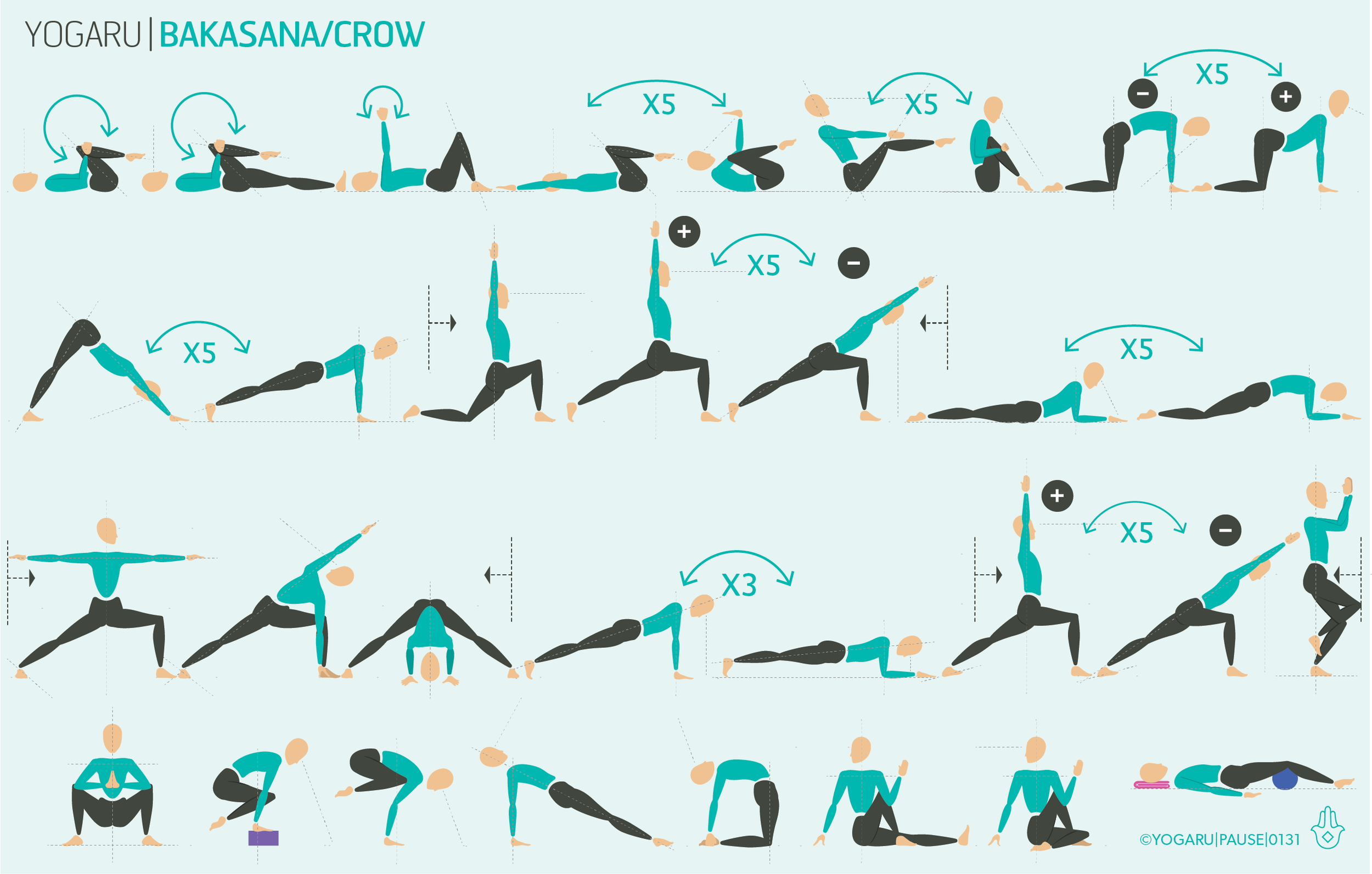BRINGING RESTORATION INTO YOUR EVERYDAY
I love restorative yoga. But I find that between my daily routine of yoga, walks, sea swims, home schooling and dinners, I don’t regularly find time to settle into an hour long restorative yoga home practice. This month I have made a commitment to myself to practice just one restorative pose each evening. My intention is to make it manageable and aim for just 10 minutes each day. I am only a few days into the process and I am already feeling the benefits. I am calmer in the face of all the uncertainty going on in the world at the moment and definitely sleep much better on days that I carve out this small commitment to myself. Join me and start today, just 10 minutes a day and notice the immediate benefits you will feel.
THE BENEFITS OF RESTORATIVE YOGA
The process of restorative yoga ‘takes a body that is feeling fragmented and puts it back together again in the kindest way possible’. Restorative yoga is the king of all yoga in terms of physical and mental wellbeing. It is particularly beneficial if you are feeling tired, stressed, anxious or have recently been ill. One of the main benefits of yoga, restorative yoga in particular, is that through the nervous system it strengthens the immune system. One of the ways it does this is through the breath, which stimulates the vagus nerve which runs from the brain to the abdomen and is the longest cranial nerve. This brings the body into the rest, digest and restore response, or the parasympathetic nervous system. This creates optimal conditions for the functionality of the organs of the body, strengthens the immune system, and relieves symptoms of chronic stress, fatigue and tension.
PROPS ARE KING
Props are king in restorative yoga, the more the merrier! It is worth the time invested in getting all your props ready to go before you settle into your practice. As you get used to practicing restorative you will become a ‘prop pro’ and know exactly how you specifically like to support yourself in each pose. Sometimes when I am arranging my props I am reminded of happy hours as a kid building all sorts of fortresses with every cushion and throw available. To get started you don’t need to have an array of official yoga props. You can improvise with household items using my prop swap guide in Restorative with home props. The props you’ll need for these restorative poses are – a bolster, two yoga bricks, two to four blankets.
EXPLORING YOUR DAILY POSE
Set yourself up with all you will need and more before you get started. Even though you are only taking one restorative pose the body will cool down quickly so layer up and stay warm. Unlike regular yoga this is a socks on, stay cosy, practice.
For your daily pose set a timer for 10 minutes, or 5 minutes each side if it is a two sided pose. As you settle into your daily routine and get used to being still you might like to extend how long you hold the pose. Be guided by what you feel you need. If I’m feeling frazzled I will stay in the pose for 20 minutes, or 10 minutes each side for a two sided pose. Remember when you are feeling stressed and anxious this is EXACTLY what you need, but a stressed and anxious mind will desperately try to convince you it wont work! You can use your phone as a timer or you can use your instinct if you don’t like the idea of being disturbed with a sound. If you choose to use your phone set the alert to a soothing sound like ‘chime’ or ‘pulse’. Scan down from head to toe and ensure every part of your body is happy. If after a few minutes you start to feel discomfort move or add more props to find comfort again.
START WITH THE BREATH
When you settle into your chosen daily pose take four to five rounds of Viloma breath – inhale for a long breath, and then exhale pause, exhale pause, exhale pause – dividing your exhale into three sections. Keep the breath as gentle as possible, notice if you are holding any tension in your shoulders and upper chest when you concentrate on the breath. Pause after your rounds and observe any change to your body and mind. As gravity and the weight of your body draws you down to the ground, feel the ground come up to support you as you melt into your practice.
Below are ten Restorative Yoga poses for you to choose from each day. Start with No.1 and work your way through the ten poses or pick and choose a different pose everyday. If there is a pose that you find particularly beneficial you can repeat this one as often as you like. You can also pick two or three poses if you would like a longer practice. At the end of your practice take a minute or two to prepare yourself to go back into your day and bring some of the lovely calm you have cultivated with you. Bring your attention to the breath again, as you inhale think ‘this is me now’, and on your exhale tell yourself ‘this is the same me in the outside world’.
ALIGNMENT CUES
Below are the restorative techniques used in this sequence..The props you’ll need are:
1 x bolster - or 2 towels, wrapped around a horizontally rolled pillow and tied to secure.
2 x yoga bricks - or 2 two thick similar sized dictionaries.
2 x yoga blankets - or any wool, thick cotton or fleece blanket with density.
No.1 - Resting savasana
Start lying on your back with a folded blanket under your head, a bolster under the creases of your knees and a blanket over you. Lift your buttocks and slide the flesh of the buttocks downwards. Legs and arms extended. Arms slightly away from your body, palms facing up. Legs slightly apart, feet gently flop out to the sides. Shoulders melt to the floor, back of the neck long. Gently close your eyes, eyeballs become heavy in their sockets, soften the temples and find ease in the tiny muscles around the eyes. Soften the muscles across your forehead, skin is smooth as silk. Let the body become heavy and melt into the support of the ground. Notice all the muscles and bones of your body become heavy.
No.2 - Mountain brook
Start lying on your back with a half rolled blanket under your head, nestling the rolled part in the curve of your neck. Place a rolled up blanket under the lower tips of your shoulder blades and a bolster under the creases of your knees. If you have an additional blanket place it on top of you for warmth and for comfort. Legs and arms extended, palms facing up. Feet gently flop out to the sides. Shoulders melt to the floor. Eyeballs become heavy in their sockets, skin on the forehead smooth as silk. Soften the temples and find ease in the tiny lines around the eyes.
No.3 - Supported bridge
From lying, lift your hips up and place the bolster horizontally under your hips. If your homemade bolster is too low add your two book bricks under the bolster. Settle your hips down onto the support of the bolster. Knees bent, feet hip distance apart or feet mat distance and knees together. Arms in cactus position or extended either side of your body, palms facing up.
No.4 - Bolster twists A
Place your bolster vertically along the top centre of your mat with a folded blanket at the top. Sit with your right hip up against the end of the bolster. Place your hands on the mat either side of the bolster and with an inhale lengthen through the whole spine and on your exhale gently place your front spine along the length of the bolster. Place your right cheek on the folded blanket and let your arms gently hang either side of the bolster. Repeat on the left side.
No.5 - Bolster twist B
Place your bolster vertically along the left side of the middle of your mat. From lying, with a blanket under your head, extend both legs out along the mat and roll your hips to your left, bend your right knee and place it on the support of the bolster, left leg remains extended. To feel this twist let your upper body and right shoulders settle down onto the mat. Bring your arms to cactus position, with arms lifted and elbows bent either side of the body, gaze over your right shoulder. If the twist is too intense add a folder blanket under your knee on the bolster. If the raised arms don't suit you, bring your arms either side of the body palms facing up. Repeat on the left side.
No.6 - Blissful banana
Make a pillow with a book brick and a blanket on top of it at the top of the mat, place a tin prop above this at arms reach. Place your bolster horizontally on your mat with a space between your bolster and pillow. Sit with your right hip next to the long edge of the bolster, knees bent. Lengthen your right side along the mat and nestle the bolster into the curve of your waist. Place your head on your pillow, your shoulder in the space between your bolster and pillow and extend your right arm forward. Extend your left arm overhead and place hold onto the tin prop. If the raised arm doesn't suit you, bring your arm down and place it at your right arm. Repeat on the left side.
No.7 - Back release
Place the bolster horizontally along the centre of your mat with a rolled up blanket at the top of your mat. Come onto your front and lie with your belly on the bolster. Bring the arms to cactus position and place your forehead on the rolled up blanket. If this is uncomfortable on your neck you can flatten the blanket and lie on your cheek remembering to swap sides after a few minutes to even out your neck stretch.
No.8 - Supported baddha konasana
Place your bolster vertically along the top of your mat with a rolled up blanket under the top. Make a head pillow with your second blanket to the top of your bolster. Have ready your book bricks and tin either side of you. Sit with the back of your hips up against the bolster. Bring the soles of your feet together and let your knees drop out to the sides. Prop your knees up with one book brick and tin each side. Gently lie back onto your bolster and place your head on the pillow at the top.
No.9 - Hip opener
From lying, with a blanket under your head, lift your hips up and place the bolster horizontally under the creases of your hips. Lengthen your legs out straight and bring your arms to cactus position, with arms lifted and elbows bent either side of the body. If this is too intense a stretch on the lower back, use a rolled up blanket instead of the bolster. If the raised arms don't suit you, bring your arms either side of the body palms facing up.
No.10 - Supine twist
From lying on your back bend your knees and place your feet hip distance apart. Gently let your knees drop to the left side of your mat. Extend your right knee away from your. Bring your arms to cactus position, with arms lifted and elbows bent either side of the body, gaze over your right shoulder. Stay here for 5 deep breaths and swap to the other side. If the raised arms don't suit you, bring your arms either side of the body, palms facing up.
To save the images for personal use click and hold down the image until the ‘save image’ option appears; on Mac hold down ‘control’ and click the image to get the option box; on PC right click on the image to get the option box. Scroll down in the ‘option box’ and click ‘save image’.
Ruth Delahunty Yogaru







